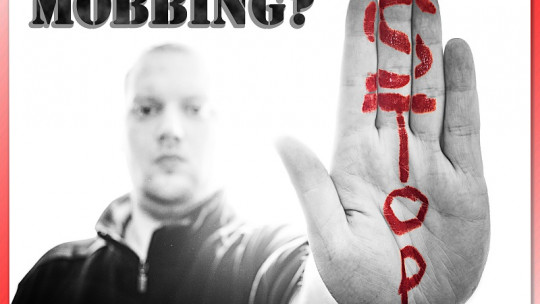It is not obvious for a victim of workplace harassment to be aware of being one Recognizing, accepting and assuming one’s situation usually takes some time, mainly for two reasons.
The first is the limited information available about the problem. In Spain and Europe, workplace harassment is relatively unknown in all its dimensions and implications compared to, for example, other similar forms of violence such as sexual harassment.
The second is its course. At first, bullying may go unnoticed since aggressive behaviors normally begin to be sporadic and of low intensity and gradually increase. When the worker notices that the situation is unsustainable, it is difficult to stop him.
That is why it is important to know how to recognize it in its initial stages To do this, it is best to understand, on the one hand, its course and the strategies carried out by the aggressor and, on the other, identify its consequences.
How to identify workplace harassment in the company
We are going to focus on the aggressive behaviors carried out by the harasser in each phase.
First phase
The beginning of bullying may be preceded by a conflict or, on the contrary, begin for no apparent reason. In this second case, the aggressor will cautiously “rehearse” the aggressive behaviors. A public reprimand, some derogatory comments, hints a joke in public, spreading a rumor, etc.
He acts in a subtle way, always looking for an excuse in case he is unmasked (“It was all a joke!”, “That’s how I am,” etc.). If the aggressor perceives that the behavior has gone unpunished or that some of his classmates have laughed at him, he will gradually increase the frequency or intensity of the harassment while trying new methods to cause additional harm.
Also It is possible that this phase has as its origin a conflict or a particular situation A conflict that the organization does not resolve and that the aggressor will use as a recurring excuse to justify its behavior.
If the aggressor is a superior, there will also be frequent complaints about the work, the imposition of impossible tasks (so that the worker cannot complete them and thus have a perfect excuse to continue with the criticism) or, on the contrary, tasks that are not in accordance with the worker’s training: ask him or her to prepare a coffee, make photocopies, etc.
These micro-aggressions will gradually undermine the victim’s morale, day by day. In fact, in France mobbing is called “moral harassment” because its objective is precisely that; demoralize the victim.
Second stage
In a second phase, The aggressor will display a repertoire of behaviors heterogeneous depending on their evil, their power, their capabilities, the implicit or explicit support of witnesses and the tolerance they perceive in the organization itself.
Obviously there are countless aggressive behaviors. Some of them would be to threaten, insult, criticize, discredit, harass, ignore, annoy, defame, ridicule, make the task difficult, silence, etc. Studies suggest that this wide range of destructive behaviors responds to four types of strategies:
1. Bullying
This includes behaviors such as verbal threats, looks of contempt, shouting, murmuring in their presence, provoke emotional reactions in the victim etc.
2. The lack of communication of the victim
Preventing the victim from talking to colleagues, not letting him express himself or interrupting him when he speaks, leaving him without a telephone or computer, placing him in a secondary or marginal place, not passing on important calls, hiding relevant information from him, etc.
3. Work discredit and personal discredit
Spread rumors, minimize your efforts and achievements, hide your skills and competencies , comment on her mistakes in public, criticize her (remember that she will have previously been burdened with unrealizable work or will have been “trapped” to fail, etc.). In addition to professional discredit, attempts will be made to discredit the victim personally.
Your personality traits will be looked for that explain your abnormal behavior (when the possible abnormal behavior has a lot to do with the situation you are going through). This strategy is important because it will ultimately lead to the expulsion of the worker under the pretext that he was not efficient or that he had a disorder.
4. Prevent professional progress
Not providing feedback or giving bad evaluations. Not assigning interesting projects or, on the contrary, assign you tasks that are not consistent with your experience or training not suggesting them for promotions, hindering their development, etc.
One of the main characteristics of this type of violence is its continuity over time. The worker can endure this abuse for years. Obviously, this extension over time has destructive consequences for the mental and physical health of the worker. At some point, either the worker or the company tries to tackle the situation, which brings us to the resolution phase.
Third phase
In this phase, the worker and the company try to find a solution to the problem. Sometimes companies try to mediate between the aggressor and the victim either through the personnel department, unions or by resorting to professional mediation services. Mediation in these types of problems is usually not an appropriate resource from the victim’s point of view
On the one hand, because when the company uses these services, the mediator himself tends to be conditioned to adopt a solution, which is usually a drastic solution (remember that the company wants to get rid of the problem as soon as possible). The worker’s situation of strong psychosocial deterioration may ultimately convince the mediator that the best option would be the worker’s own departure.
Another alternative is to open an “internal investigation” that, in the best of cases, can end in the worker being changed jobs, although it usually happens that this worker already carries with him that “stigma” that can stop him from fitting in. the new location.
It is common for the worker to voluntarily request this job change although that desire is rarely satisfied. In private companies, the aggravating factor is that a worker with several years of experience does not want to leave and give up compensation. This leads him to go through an ordeal that worsens the consequences on his health.
In this phase, sick leave due to depression, anxiety, symptoms of post-traumatic stress are common and other types of non-work social problems are generated (breakups with a partner, distance from friends, etc.) that put the worker in an extreme situation. vulnerability and that, normally, end with their dismissal.
Concluding
If as a worker you recognize yourself in any of these or in the type of strategies and maneuvers that we have described, it is likely that you are suffering from mobbing. Then, It is best to ask for professional advice and help to try to get out of the situation. Trying to do it yourself can be a daunting task with little chance of success. The necessary help must be both psychological and legal.









